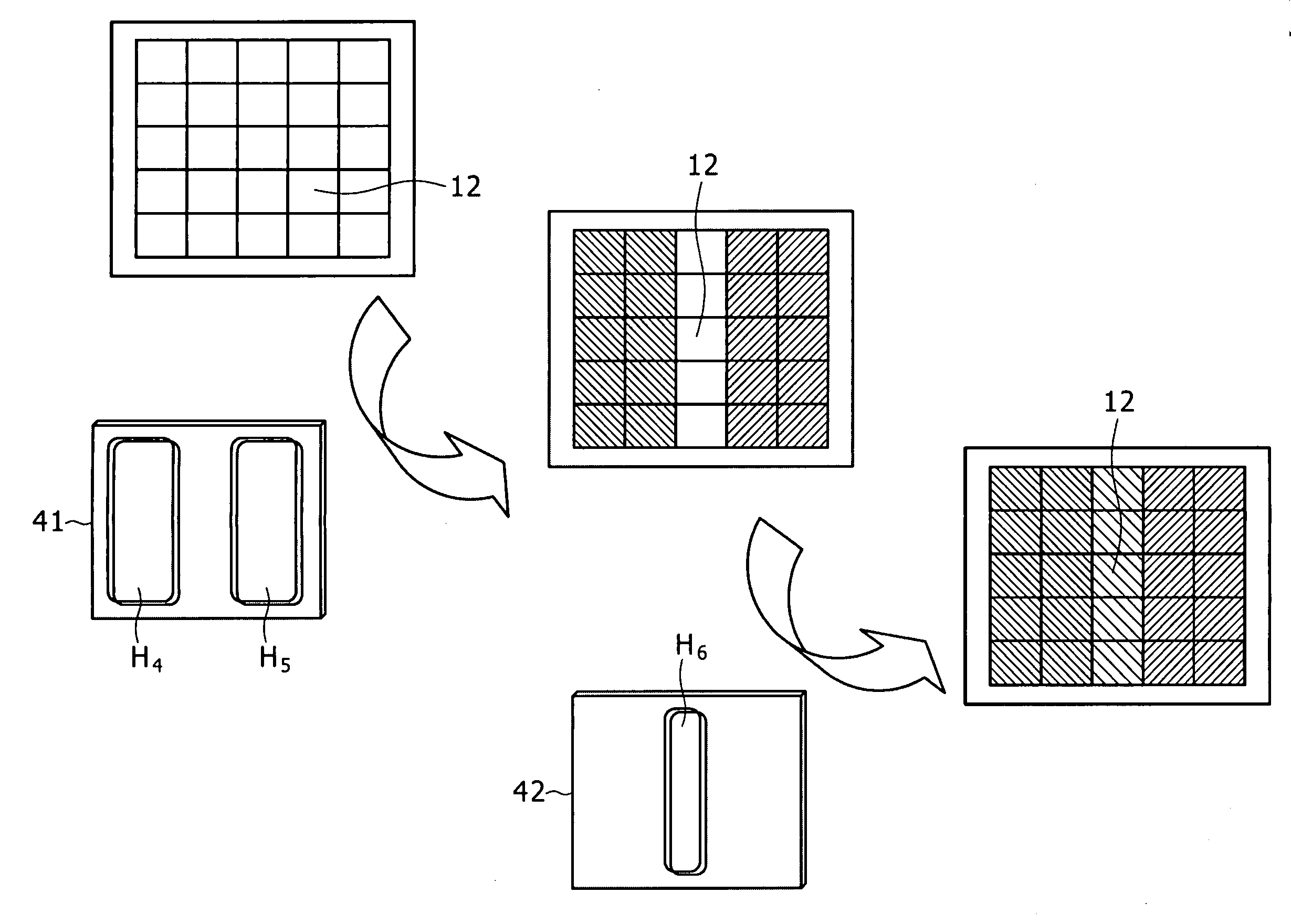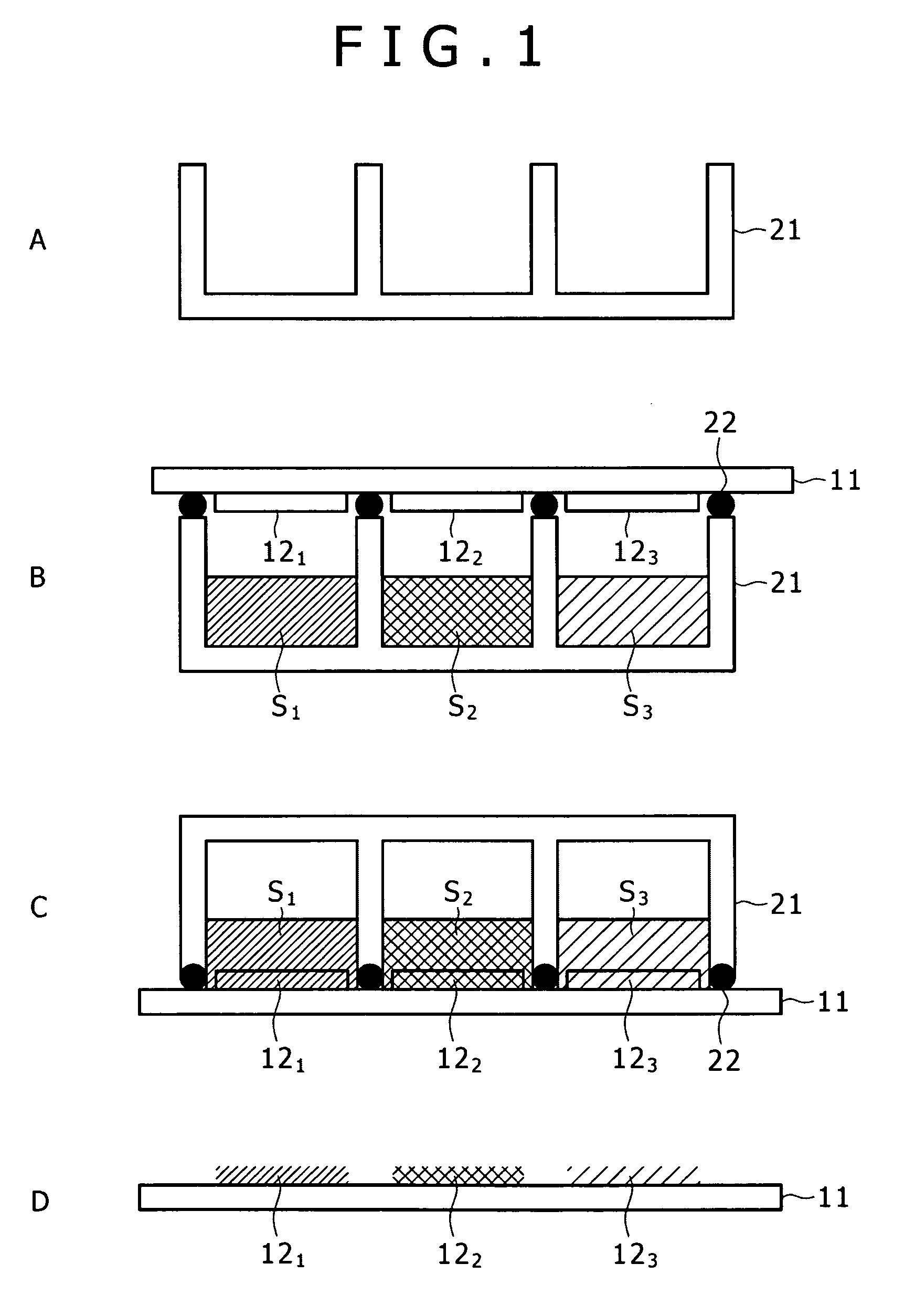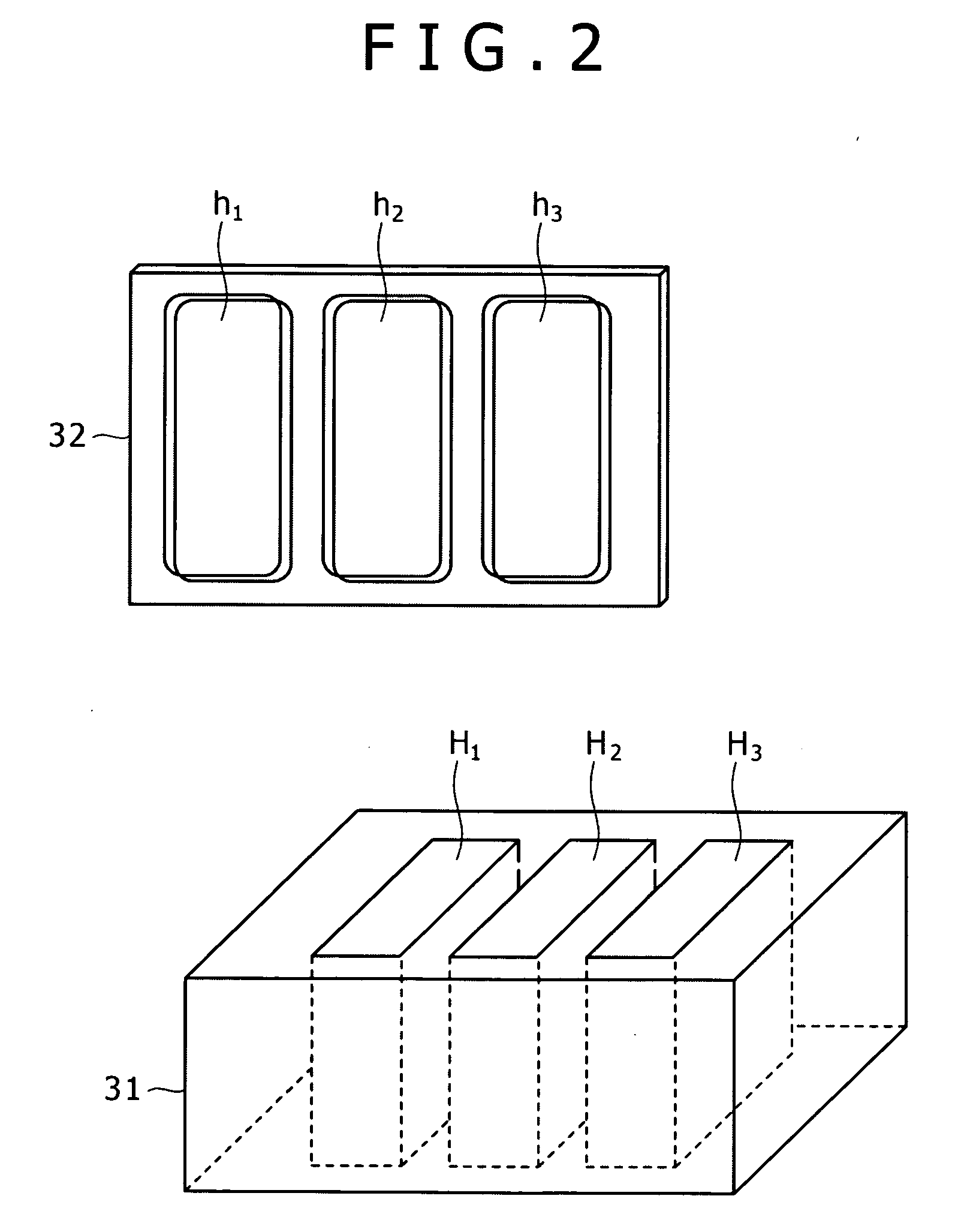Method of manufacturing photoelectric conversion device
a technology of photoelectric conversion and manufacturing method, which is applied in the manufacture of final products, sustainable manufacturing/processing, electrochemical generators, etc., can solve the problems of long occupation time and difficulty in selective coloring with dyes, and achieve the effect of selective dye adsorption
- Summary
- Abstract
- Description
- Claims
- Application Information
AI Technical Summary
Benefits of technology
Problems solved by technology
Method used
Image
Examples
first embodiment
[0039]The steps (1), (2), and (3) as a stage preceding the (4) dye adsorbing process coat a commercial FTO glass (15 Ω / □) with a commercial TiO2 paste by a screen printing process, and sinter the FTO glass for one hour at 500° C. Thus, a titanium oxide electrode (average film thickness of 20 μm) having a strip-shaped pattern is obtained.
[0040]The process next proceeds to the (4) dye adsorbing process. The process represented in a sectional view of the step of the (4) dye adsorbing process of FIG. 1 is performed. Incidentally, in FIG. 1, the strip-shaped titanium oxide electrode obtained in the steps of (1) to (3) is described as semiconductor electrodes 121 to 123.
[0041]As shown in A of FIG. 1, a material unit 21 is of a container shape (tray shape) having a bottom part. In addition, the material unit 21 has partition walls of a predetermined shape. Different dye solutions can be put in respective sections divided by the partition walls. For example, in A of FIG. 1, the material uni...
second embodiment
[0050]In the foregoing [First Embodiment], an example of using the adhesive 22 and an example of press-fitting by a gasket have been described as the method of laminating the material unit 21. However, the press-fitting method includes not only a mechanical press-fitting method but also a press-fitting method using atmospheric pressure such as laminating the material unit 21 in a vacuum and then returning the material unit 21 to atmospheric pressure.
[0051]Specifically, a material unit 21 that has partition walls in which three kinds of dye solutions S1 to S3 similar to those of [First Embodiment] are injected and which is provided with a silicon rubber layer on the outer circumferences of the partition walls is mechanically laminated to semiconductor electrodes 121 to 123 fabricated by a similar method to that of [First Embodiment] (steps (1) to (3)). Thereafter, the internal space of the material unit 21 set in a sealed state by being laminated is decompressed by a vacuum pump, whe...
third embodiment
[0053]In the foregoing [First Embodiment], description has been made of a constitution in which dyes are adsorbed on the semiconductor electrodes 121 to 123 by inverting the material unit 21 in FIG. 1. However, dyes can be adsorbed without the member being inverted by using a material unit 31 in FIG. 2. Incidentally, in FIG. 2, a diagram on a lower side is a perspective view of the material unit 31, and a diagram on an upper side is a top view of a silicon rubber 32.
[0054]Specifically, the material unit 31 having a hollow shape is mechanically press-fitted to semiconductor electrodes 121 to 123 fabricated by a similar method to that of [First Embodiment] (steps (1) to (3)) via the silicon rubber 32 having hole parts h1 to h3 corresponding to the hollow parts H1 to H3 of the material unit 31. That is, at this time, the semiconductor electrodes 121 to 123 are situated at the bottom part of the material unit 31 having the hollow shape. Thereafter, when three kinds of dye solutions S1 t...
PUM
 Login to View More
Login to View More Abstract
Description
Claims
Application Information
 Login to View More
Login to View More - R&D
- Intellectual Property
- Life Sciences
- Materials
- Tech Scout
- Unparalleled Data Quality
- Higher Quality Content
- 60% Fewer Hallucinations
Browse by: Latest US Patents, China's latest patents, Technical Efficacy Thesaurus, Application Domain, Technology Topic, Popular Technical Reports.
© 2025 PatSnap. All rights reserved.Legal|Privacy policy|Modern Slavery Act Transparency Statement|Sitemap|About US| Contact US: help@patsnap.com



